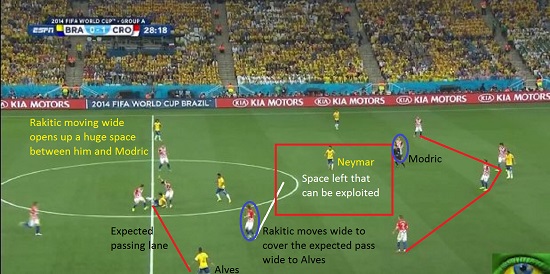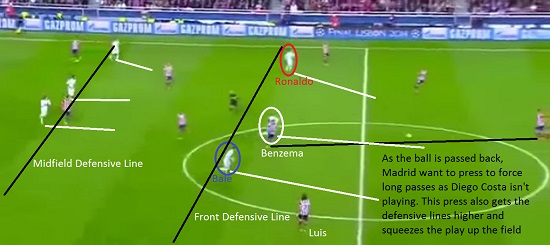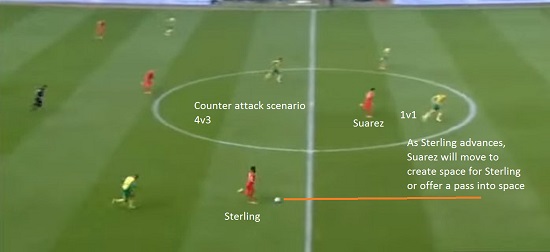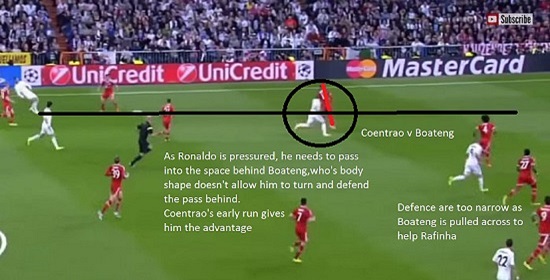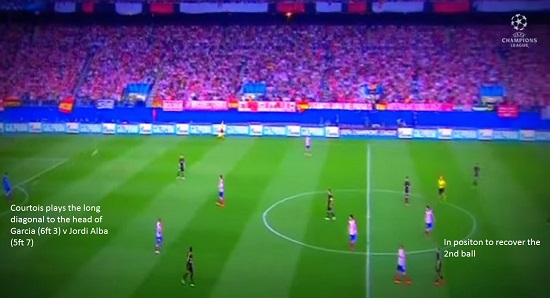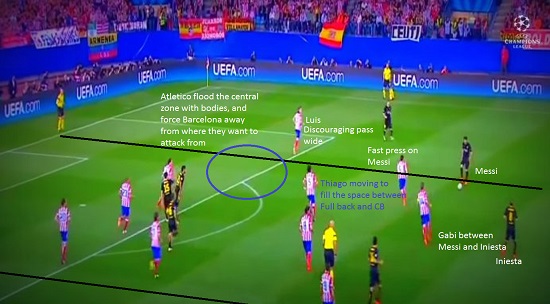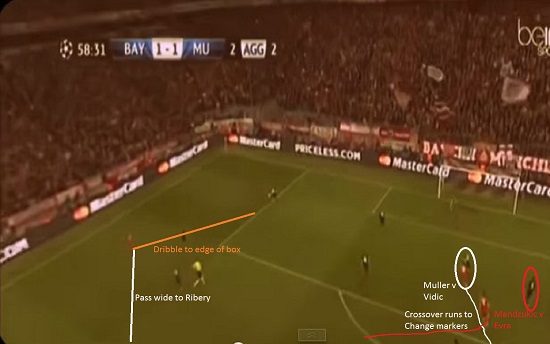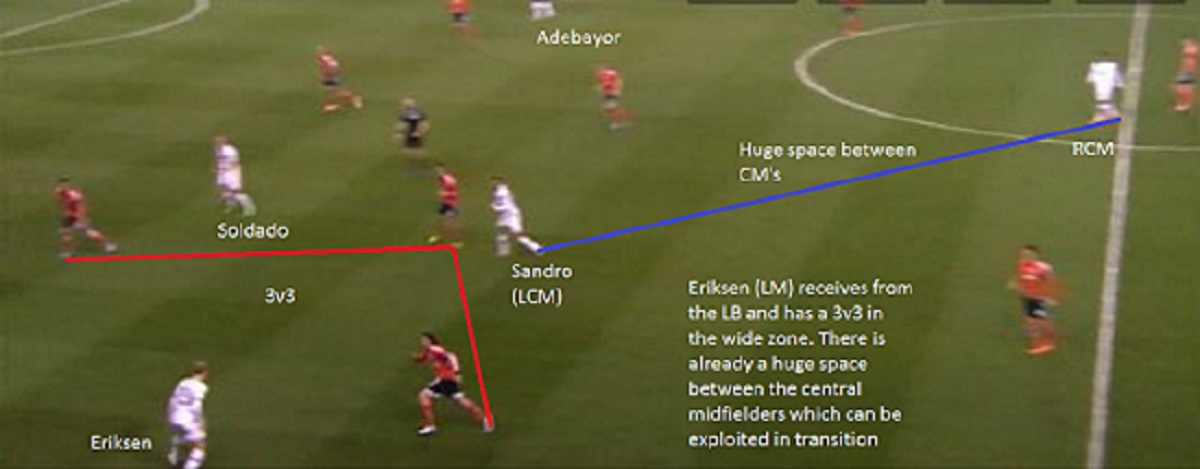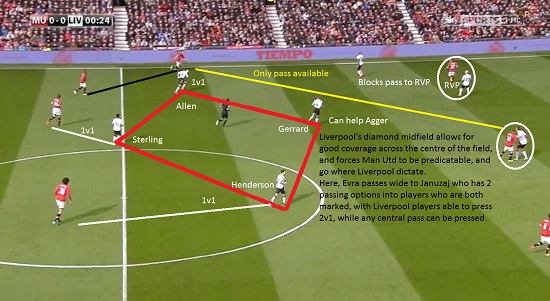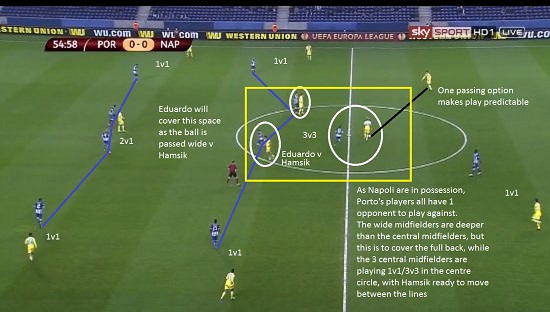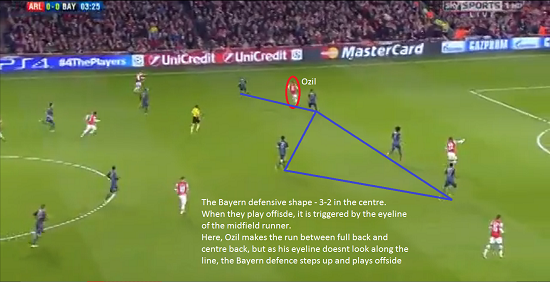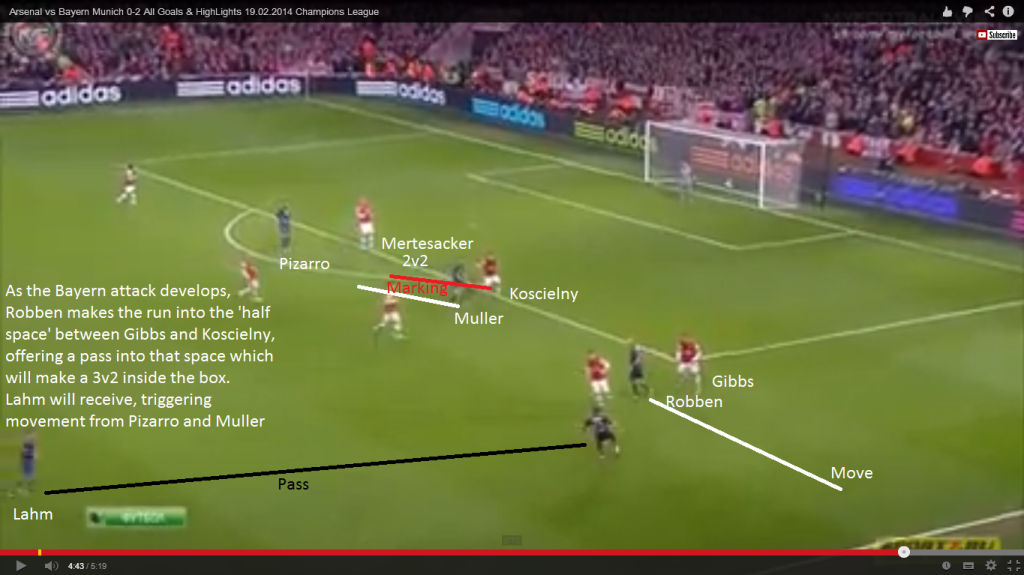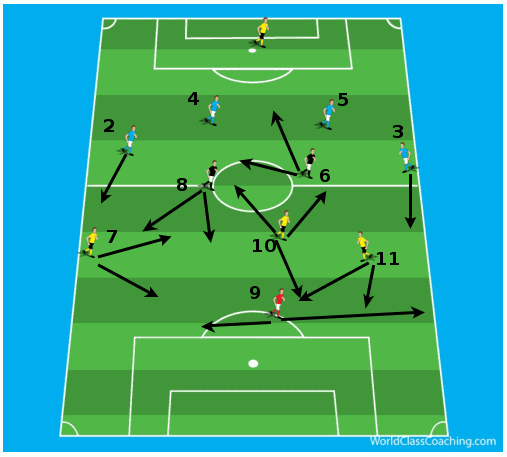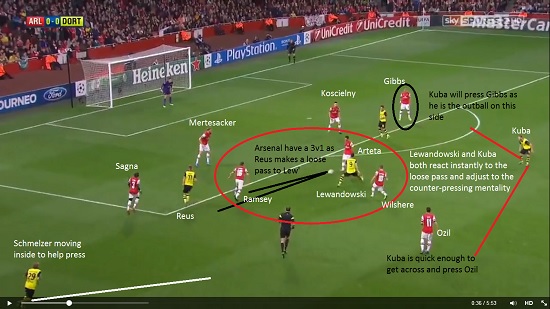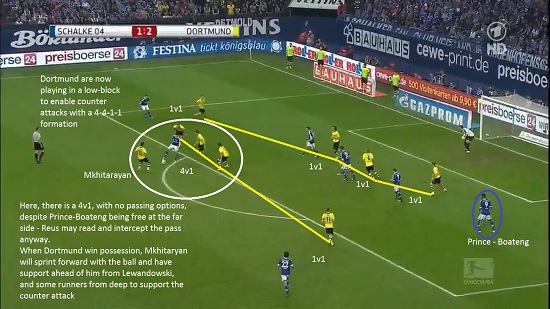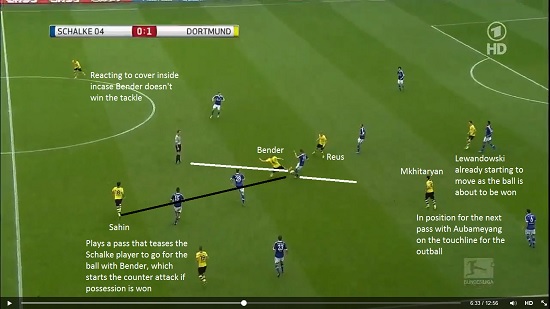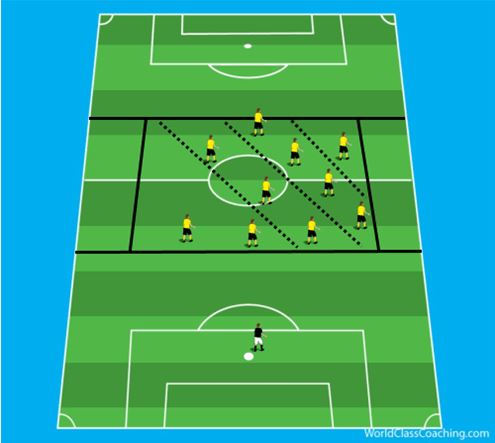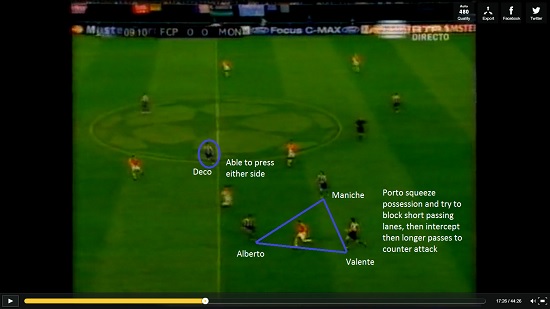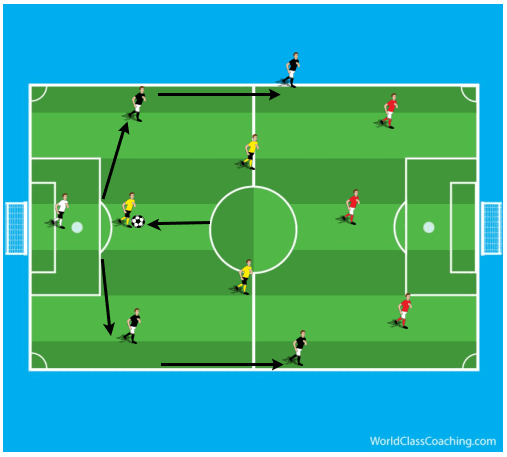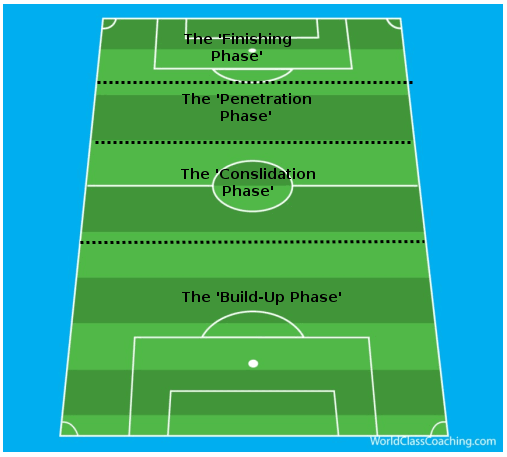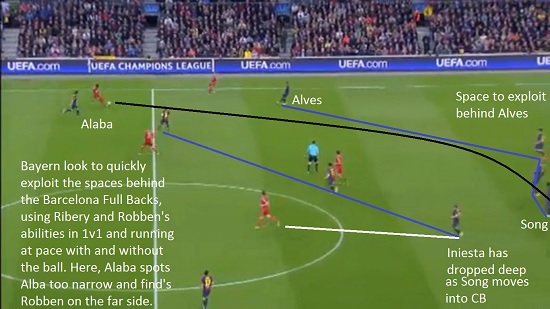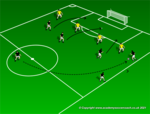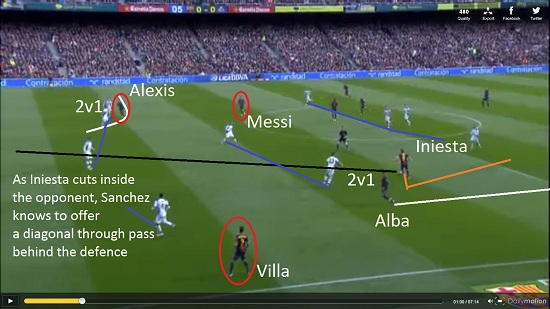Modric and Rakitic’s Midfield Defensive Imbalance
By Stevie Grieve
In the opening match of the FIFA World Cup, Croatia played against hosts Brazil, and were tipped to struggle against one of the favourites for the tournament. Croatia can always feel confident against any team boasting a midfield of new Barcelona signing Ivan Rakitic, Real Madrid playmaker Luka Modric, and Inter Milan attacking midfielder Mateo Kovacic, they have a slight defensive imbalance as despite all 3 being able to play as a playmaker or a number 10, none of the 3 are natural holding or defensive midfielders, and in this game it showed with the distances and angles of defensive support and lack of speed to reshape in defensive transition, particularly from Modric and Rakitic.
Brazil’s opening goal – Rakitic and Modric are too far apart as the ball breaks loose
Brazil and Croatia are battling for a loose ball in midfield, Croatia should win it but don’t which leaves the midfield open as Rakitic shifts wider to intercept/press Alves. In doing so, this leaves
Continue reading
